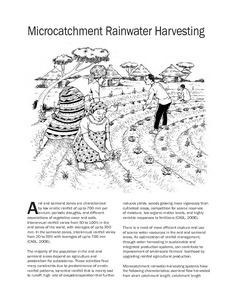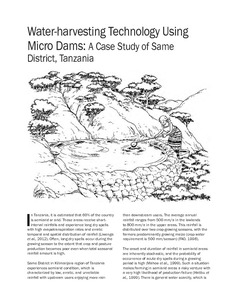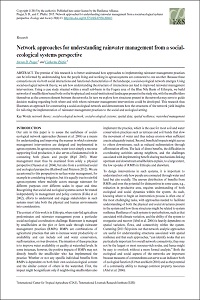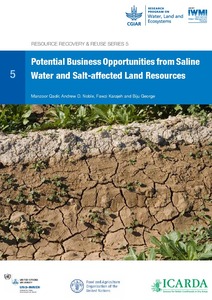Managing water: Some interventions for managing water for agriculture in Eastern and Southern Africa
Managing water: Water resource management options for smallholder farming systems in sub-Saharan Africa
Managing water: Water-harvesting technology using micro dams: A case study of same district, Tanzania
Measuring transboundary water cooperation: learning from the past to inform the sustainable development goals
Water cooperation has received prominent focus in the post-2015 United Nations Sustainable Development Goals (SDGs). While proposals for measuring water cooperation appear to be converging toward a small set of indicators, the degree to which these proposed indicators draw on past work is unclear.
Network approaches for understanding rainwater management from a socialecological systems perspective
The premise of this research is to better understand how approaches to implementing rainwater management practices can be informed by understanding how the people living and working in agroecosystems are connected to one another. Because these connections are via both social interactions and functional characteristics of the landscape, a social-ecological network emerges.
Overview of the scientific, political and financial landscapes of Climate-Smart Agriculture in West Africa: sector of water resources
Potential business opportunities from saline water and salt-affected land resources
Proceedings of the CPWF, GBDC, WLE Conference on Revitalizing the Ganges Coastal Zone: Turning Science into Policy and Practices, Dhaka, Bangladesh, 21-23 October 2015
Proceedings of the Launching Workshop of the Agricultural Water Management Platform, Addis Ababa, Ethiopia, 15-16 January 2015
Reviving the Ganges water machine: why?
The Ganges River Basin may have a major pending water crisis. Although the basin has abundant surface water and groundwater resources, the seasonal monsoon causes a mismatch between supply and demand as well as flooding. Water availability and flood potential is high during the 3–4 months of the monsoon season. Yet, the highest demands occur during the 8–9 months of the non-monsoon period.







